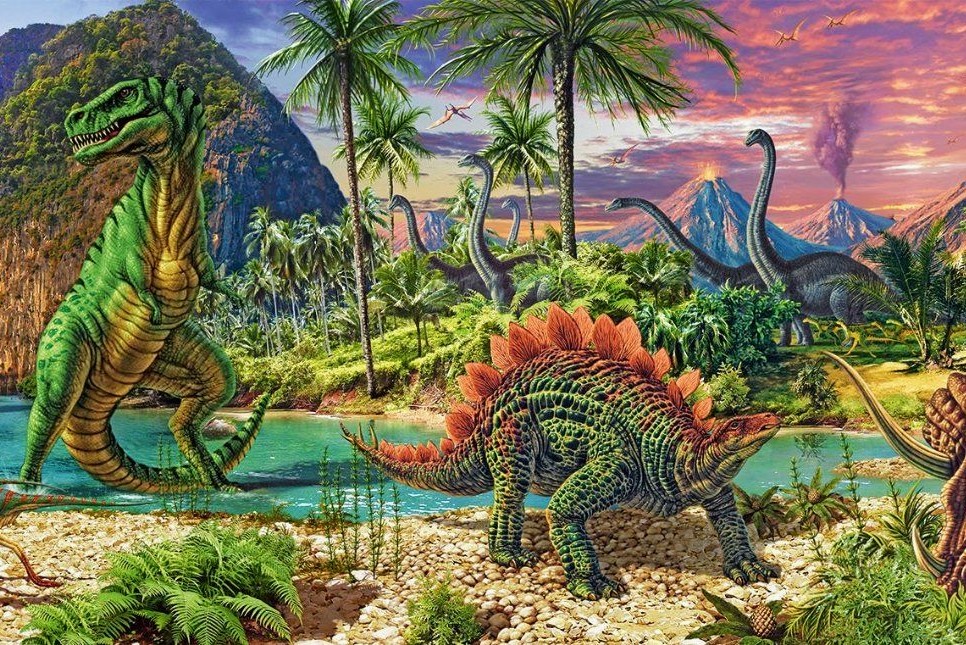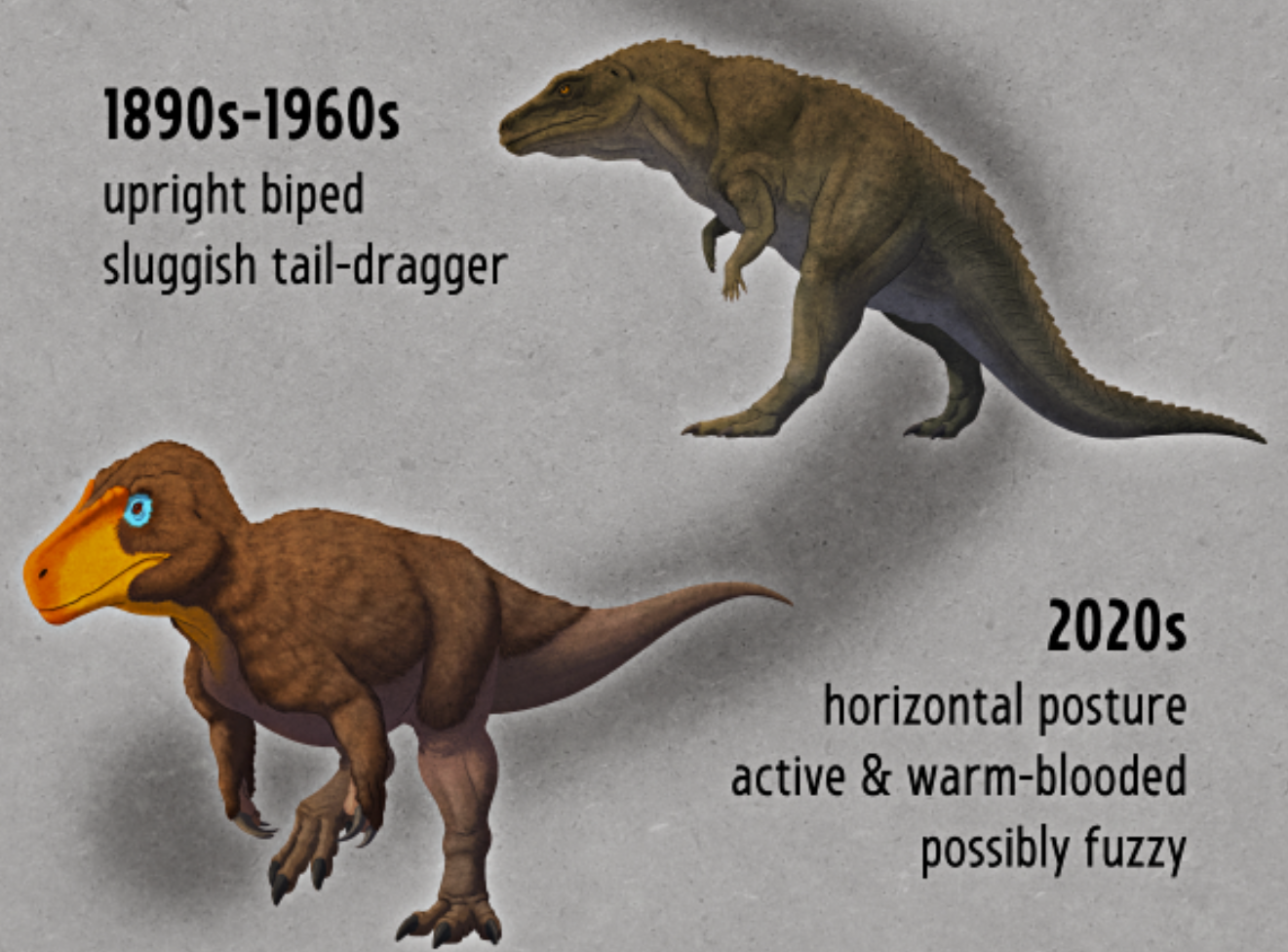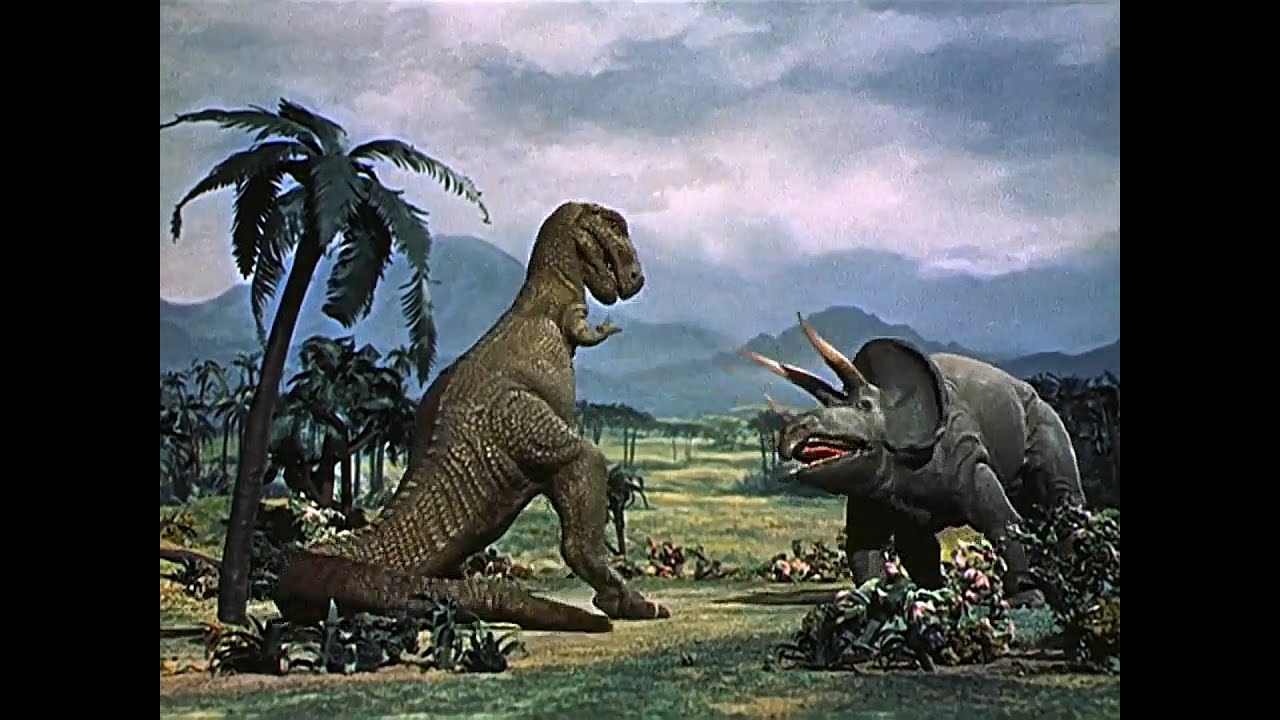
Ravensburger Jigsaw Puzzle, artist unknown
When I was a kid, like many, dinosaurs were my first special interest✨. I lived through an absolute golden age – I was at peak kid between Jurassic Park (1993) and the BBC’s landmark CGI series Walking with Dinosaurs (1999). I spent much of my free time researching them on Encarta ‘95 (basically offline Wikipedia). I also had a CD-ROM called 3-D Dinosaur Adventure. It was packed with dinosaur quizzes, short films, and games. There was a nerve-wracking Doom-like timed maze game in which you had to escape the labyrinth before the asteroid hit. It was extremely stressful.
This was also the time when people were really starting to talk about the relationship between birds and dinosaurs, though I keenly remember that the tone around this was still very poetic or analogical. Kinda like how people say that sharks and crocodiles are living fossils. The rote phrases were that birds are descended from dinosaurs, or that they shared many characteristics with them. That hit quite differently from today’s understanding that birds are literally, actually dinosaurs.
There’s lots of stuff I didn’t know when I was seven, and a lot of stuff I didn’t care to know. Like the fact that people were already arguing for modern birds getting reclassified to the clade Dinosauria as early as the 1970s. I didn’t know what a clade was, and I still don’t.

Megalosaurus bucklandii over time (Credit: Alphynix)
Temporal Lag
The academia-to-public pipeline is slow and unreliable. It takes an average of 30 years for an established fact to enter public awareness, if it does at all. Sometimes this lag can be much greater. I mean, how many new agers actually know that the double slit experiment took place back in 1927? Literally a century ago.
As for dino-birds, in 1996 – right around the time that wider society was getting wind of this debate – feathered dinosaur fossils were uncovered in Liaoning province that settled the matter. Sadly, 3-D Dinosaur Adventure was published in 1993, so I didn’t have access to the latest research.
That’s what has been eerie for me about revisiting dinosaurs today. I was last paying serious attention to them 30 years ago. That’s plenty of time for things to have changed quite substantially in a field. For example, in 1965 – one Saturn cycle before – the orthodoxy was that dinosaurs were cold-blooded, and accordingly a bit slow and dumb. They also walked much more upright, dragging their tails along the floor. This is the classic Ray Harryhausen dinosaur look.

Ray Harryhausen's stop-motion dinosaurs - *The Animal World* (1956)
Dinosaurs were also considered to be a perfect evolutionary dead end, and the accepted view was that they disappeared due to a failure to adapt and compete, Darwin-style. Of course, that’s still essentially true, but we now know it’s because they couldn’t take an asteroid on the chin like our little rodent ancestors could.
So a lot can change in 30 years. When Jurassic Park came out, it was very à la mode in having theropods (the two-legged guys) holding their tails out as counterbalances, and the displays of intelligence exhibited by the velociraptors in those films were, for the public, extremely novel, not to mention terrifying.
In Their Lane. Focused. Flourishing.
Thirty years further on still and now, birds are dinosaurs – that’s locked in. What I wasn't counting on was that influence heading back upstream. It’s 2025, and dinosaurs are birds now.
Huge killer turkey-crow-emus hit differently (Credit: CoolioArt)
In the time I took my eye off the ball, dinosaurs have come to be thought of as having feathers and plumage in a huge variety of colours and patterns, just like birds. We now also think of them as predominantly warm-blooded, and accordingly way more active, social, and intelligent, with nesting behaviours much more akin to a chicken than an iguana.
And while I was integrating these new-to-me revelations, I ran across another one. I don’t know what people are taught in biology class nowadays, but when I was at school it was explained to me that birds evolved hollow bones because they were lighter, and this made flying possible.
If that’s the reason for hollow bones then, I’m sorry why do dinosaurs have them??
It turns out that the actual reason is that dinosaurs evolved hollow bones because their lightweight structure made growing to such vast sizes possible without being crushed under their own weight. And that this feat of engineering, focused on scalability, ended up being a happy benefit/accident that gave rise to flight in avian dinosaurs. what. So not only are dinosaurs now birds, they’re (comparatively) light.
And this explains why we don’t have more flying mammals. I’m shook.
Idk what to do with all this, but I am proud of dinosaurs for making such interesting moves. Here’s to the next 30 years.
 doubtshrine.uk
doubtshrine.uk